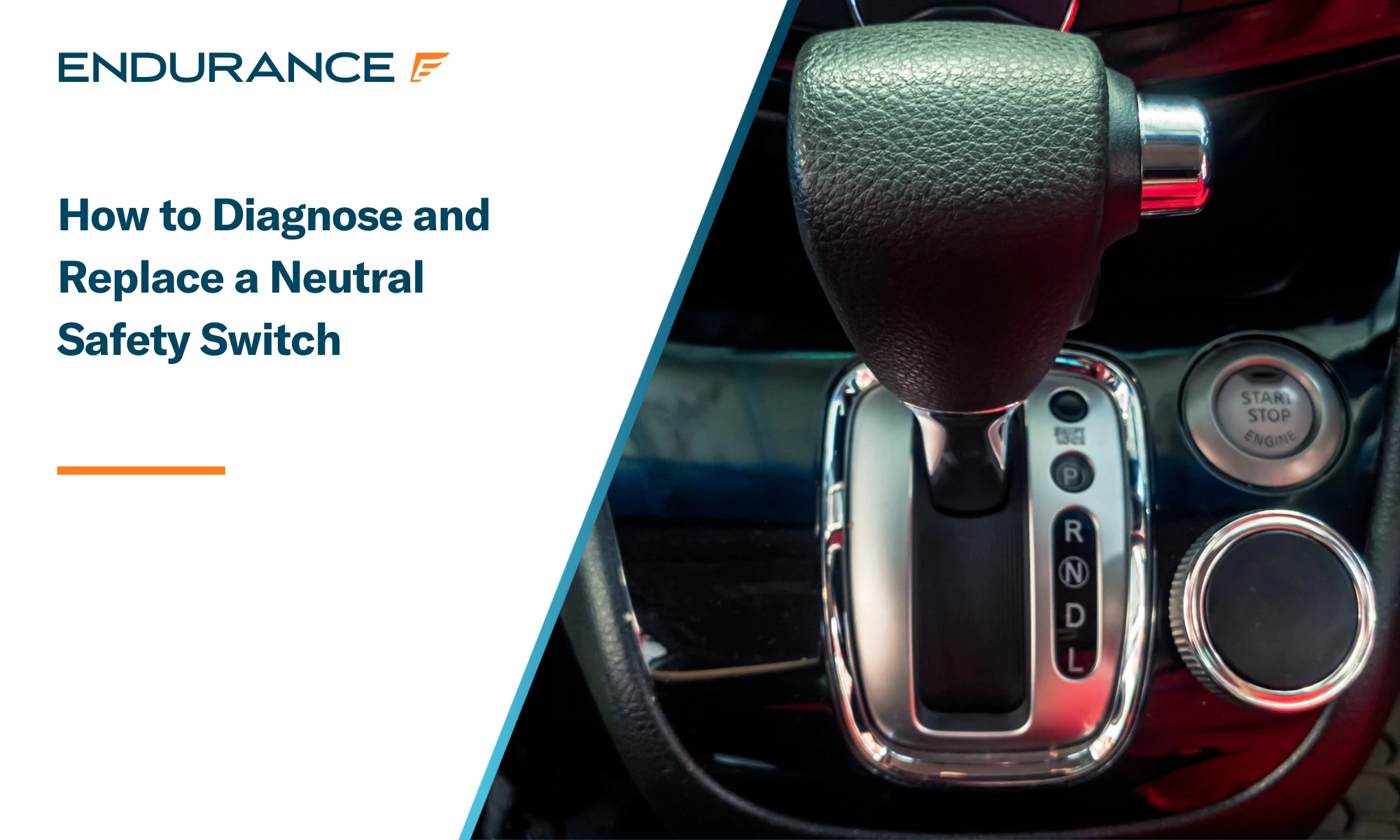Get this deal! Call now.
Speak with a vehicle protection plan specialist and get $300 off any new contract instantly.
Call 866-678-4172
or scan the code below


Modern vehicles are built with safety measures to prevent accidents before they happen. One of the most overlooked yet essential measures is the neutral safety switch. This crucial part ensures that your vehicle only starts when its gear is in ‘Park’ or ‘Neutral.’ Without it, your vehicle could unexpectedly lurch forward or backward the moment the engine turns over, which can be quite dangerous.
In some cases, the neutral safety switch (NSS) will show signs of an issue, such as the car starting in a different gear, intermittent no-start conditions, a sudden loss of backup lights, and more. To avoid potential dangers stemming from this problem, learn where the switch is located within the transmission housing and how troubleshooting its functionality can help determine if a visit to the repair shop is necessary.
The neutral safety switch is a mechanism designed to stop your vehicle from starting in any other gear besides ‘Park’ or ‘Neutral’ so that your vehicle doesn’t lurch forward or backward. It also often doubles as the backup light switch in some automatic transmissions, meaning it turns your reverse lights on when you switch the gear to ‘Reverse.’ This clever component works in the following way:
Fortunately, a failing neutral safety switch is relatively simple to diagnose if you know what you are looking for. This component also doesn’t just fail overnight, but rather slowly develops issues over time. Keep an eye out for some of the following red flags:
The exact location of the neutral safety switch can vary from vehicle to vehicle. On newer vehicles with an automatic transmission, it is typically within the transmission housing where it is mounted to the side or directly connected to the shift linkage. You should look for small and rectangular box-like component.
For those with older vehicles, the switch might be directly integrated within the steering column near the shifter itself. Front-wheel drive vehicles, on the other hand, will often have the NSS attached to the transmission case, which is accessible from under the hood. If you aren’t sure where your neutral safety switch is, simply check your vehicle’s repair manual, which includes diagrams of the car, or look it up online through your car’s manufacturer.
Before you rush to buy a new neutral safety switch when you think you’ve experienced one of the listed issues above, it’s important to first check the condition of your existing one. Many switches fail due to simple misalignment rather than a total breakdown, which is a cheaper fix. To test your switch, try some of the following methods:
Replacing a neutral safety switch is a relatively simple DIY job once you have located it. Grab some basic tools for cars, including a socket set and ratchet, wrenches, screwdrivers, a multimeter, and a replacement neutral safety switch. Tackle the replacement with the following eight simple steps:
It’s worth noting that tackling a DIY repair based on your own diagnosis of the neutral starter switch can potentially invalidate any auto warranty you have on your vehicle. Manufacturer warranties often dictate that you need to take the car to a dealership to get the auto repair handled, whereas extended warranties or service contracts often dictate that the work must be done by certified shops within their networks.
The neutral safety switch may be one of the most overlooked components under the hood, but it’s also one of the most important. A failing switch can cause everything from a headache due to a no-start issue to a dangerous unintended movement when you start your car. Don’t leave this issue unchecked, and take your vehicle to be diagnosed as soon as possible if you suspect there’s an issue.
If your vehicle warranty has expired, consider investing in a service contract from Endurance Warranty. With a range of customizable auto coverage plans to choose from, you can enjoy coverage ranging from affordable basic plans to protection most similar to the manufacturer warranty that accompanies a new car. On top of this, all Endurance plans come with 24/7 roadside assistance and a year of Elite Benefits, offering bonus perks like reimbursements for up to four tires per year due to road hazards, key fob replacement, windshield repair, and more.*
To learn how Endurance can protect your vehicle, contact one of our service plan advisors at (800) 253-8203 or request a FREE quote online. You can also see your price and plan recommendations on our eStore.

We've received your vehicle information and will contact you shortly with your quote.
— OR —
Start shopping for a coverage plan now.

We're here to make sure you get the most comprehensive EV protection. That's why we've partnered with Xcelerate Auto to offer you transparent and dependable Tesla coverage.
Want us to contact you about XCare coverage for your Tesla?



Your protection is our top priority. Your quote is in progress and you will
receive a confirmation
email shortly.


Speak with a vehicle protection plan specialist and get $300 off any new contract instantly.

Call for $300 off any new plan!
By clicking the button, you consent to Endurance using automated technology to call, email, and text you using the contact info above, including your wireless number, if provided, regarding auto protection or, in California, mechanical breakdown insurance. You also agree to the Endurance Privacy Policy and Terms and Conditions. Consent is not a condition of purchase, and you can withdraw consent at any time. Message and data rates may apply.


Speak with a vehicle protection plan specialist and get $300 off any new contract instantly.
Call 866-678-4172
or scan the code below



Simply fill out the information below and we will follow up fast with your free no-obligation quote.
By clicking the button, you consent to Endurance using automated technology to call, email, and text you using the contact info above, including your wireless number, if provided, regarding auto protection or, in California, mechanical breakdown insurance. You also agree to the Endurance Privacy Policy and Terms and Conditions. Consent is not a condition of purchase, and you can withdraw consent at any time. Message and data rates may apply.

To speak to a vehicle protection plan specialist and get $300 off any new contract instantly
Scan the code below
Since the age of 16, Keith has been immersed in the automotive industry, beginning his career by helping his dad fix vehicles at a young age. Keith now owns his own family-run, ASE Certified repair shop, A+ Autocare. At his shop, he focuses on building trusting relationships with his community through exceptional customer service. Read more about Keith.